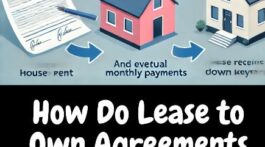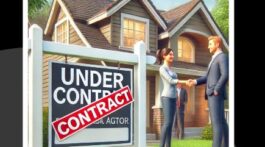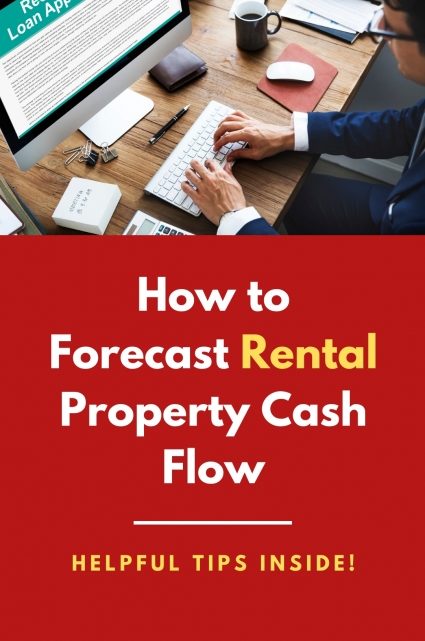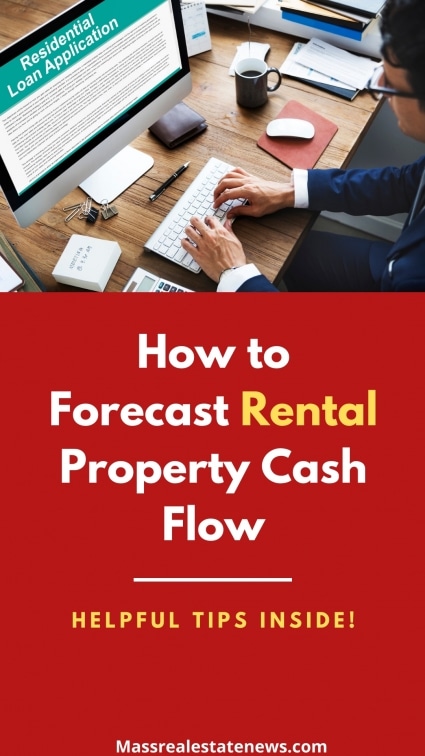Tips For Forecasting Rental Property Cash Flow
Lots of investors want to know how to calculate rental cash flow. Sure, rental properties offer ongoing income, tax benefits, and a hedge against inflation. And, for that matter, the ability to leverage other people’s money to build your own portfolio of assets.
But for all that, my favorite perk to investing in rental properties is the predictable returns.
Investors can calculate a rental property’s cash flow with extraordinary accuracy. The same can’t be said for other types of investments, where you buy them based on historical risk and returns, and then simply hope that history repeats itself.
Unfortunately, new real estate investors usually get cash flow forecasts wrong because they underestimate expenses. Here’s what prospective rental investors need to know before buying a rental property, and how to calculate rental cash flow accurately.
 Calculating Rental Cash Flow 101
Calculating Rental Cash Flow 101
The first part of the rental cash flow equation is simple: revenue from rents. Start by researching market rents in the target neighborhood, using Zillow, Craigslist, and any other rental listing websites of your choosing.
Pay careful attention to how your prospective property compares to others in the neighborhood. If most properties have a patio, and yours doesn’t, you need to adjust your rent estimate accordingly.
Still, the revenue side of cash flow calculations isn’t where new investors get tripped up. Where they struggle is with estimating average long-term expenses.
As the core due diligence for any prospective income property, run the cash flow numbers through a rental cash flow calculator. Beyond being a free, instantaneous resource, good ones remind you to include all expenses in your calculations.
Remember, just because you don’t incur an expense every single month doesn’t mean you can ignore it. Many rental-related costs are irregular; they rear their ugly head once in a blue moon and throw off your profits.
Rental cash flow is not “rent minus the mortgage payment.” Instead, it involves taking the long-term average of significant, irregular expenses, that doesn’t hit you every month but do inevitably hit you nonetheless.
Maintenance & Repairs
Technically, maintenance and repairs are two different expenses. Repairs involve long-term improvements and replacements that extend the functional lifespan of the property. Maintenance includes periodic work required to keep the property habitable and marketable, such as repainting and replacing carpets between tenancies.
I personally lump them together; however, in my cash flow calculations. For most properties, I budget between 12-15% of the rent for maintenance and repairs, depending on the age and condition of the property.
New investors make the mistake of thinking that repair and maintenance costs are the exceptions rather than the rule. They tell themselves, “Well, sure, I lost some money this year to repair costs. But next year will be different!”
Spoiler alert: next year won’t be different. Maybe this year, it was the roof that needed work, at $2,500. Next year it’s the furnace that needs servicing for $800. The year after that, your tenants move out, and you blow $4,000 on repainting and replacing the carpets.
Maintenance and repairs happen. Budget for them, because you’ll pay the costs whether you expect them or not.
Vacancy Rate
No property sees 100% occupancy. Sooner or later, your tenants move out, and when they do, it takes time to turn over the property. Like that person who is renting to own that decides to go in another direction.
You might need to replace the flooring. You’ll probably need to repaint. And all the other maintenance you’d been deferring? You need to do all that too, to put the property in pristine shape for marketing.
That takes time, not just money. The time during which you can’t collect rent.
An 8% vacancy rate represents one month sitting vacant each year. In high-demand markets, you can typically do better than that, budgeting perhaps 4%. In cool markets, however, properties might sit vacant several months between vacancies.
Know your target market and budget for vacancies accordingly.
Property Management Fees
I hear new investors moan all the time: “I don’t need to budget for property management, I’ll be managing the property myself!”
Until you move out of state, or take a more demanding job, or have a few kids. Or maybe it turns out that you’re not very good at managing rentals, or simply hate doing it.
Even if you end up managing your properties effectively, you still need to budget for property management. Why? Because it’s a labor cost, whether you perform the labor or you outsource it to someone else. To ignore it is to deceive yourself about returns.
After all, if you want to compare the returns on rental properties to another investment, like stocks, you need to compare apples to apples. Stocks don’t call you at 3 AM complaining that a light bulb went out, don’t require that you spend your Saturday mornings cleaning and showing vacant units.
When you budget for property management fees, don’t just plan for the ongoing rent percentage, either. Property managers also charge a fee for screening and signing a lease agreement with new tenants.
I usually budget 12-14% for property management fees: 8-10% for the rent collection percentage, plus another 4% for new tenant leasing fees.
Insurance: Both Property & Rent Default Insurance
You already know you need to budget for landlord insurance. If you borrow a rental property loan, the lender will probably escrow for property insurance as part of the monthly mortgage payment.
Build relationships with insurance agents in your market, and familiarize yourself with the typical premium costs. You should be able to estimate annual premiums within $100 for properties in your market.
Also, consider budgeting for rent default insurance. A relatively new service in the US, overseas landlords frequently use rent default insurance to protect against, you guessed it, rent defaults.
It works like this: if the tenant stops paying the rent, the insurance starts paying it, so you never go without rent coming in. While you need to go through the eviction process, clean out and update the property, market it for rent, and lease to a new tenant, the insurance pays the rent to keep you afloat.
Fortunately, rent default insurance isn’t costly, usually ranging between $250-400. Consider it one more way to mitigate the risks of owning a rental property.
Property Taxes
Most new investors remember to budget for property taxes. Lenders make this easy by escrowing for it and including it in the monthly payment.
All well and good, except for one wrinkle: the current tax bill doesn’t necessarily reflect the taxes you’ll pay.
When you calculate property taxes as part of your rental cash flow, don’t use the current annual property taxes. You must assume that the municipality will re-assess the property value after you buy it, based on the purchase price. So look up the property tax rate in your market, and calculate property taxes based on that percentage of the purchase price.
Mortgage Payment
The monthly mortgage payment is the one expense no investor will ever forget.
That said, investors should shop around to find the best rental property loan terms. Look beyond the interest rate and points too, and check each lender’s flat fees that they charge at settlement, and verify that the interest rate remains fixed for the full life of the loan.
Also, be careful not to fixate too much on the down payment. Expect to put down at least 20%, possibly more, on an investment property. Cast a skeptical eye on any lenders offering a lower down payment.
Finally, consider portfolio lenders in addition to conventional mortgage lenders. Because of credit reporting limitations, you can only borrow a couple of conventional mortgages before you hit the ceiling (usually four mortgages reporting on your credit, including your home loan). Portfolio lenders, meanwhile, typically don’t report to the credit bureaus and don’t put a cap on loans.
There are some excellent mortgage options for rental property loans. Consider taking advantage of one of these loan products.
Administrative & Miscellaneous Expenses
Last and certainly least, expect to lose between 2-4% of the rent to administrative and other expenses.
These include bookkeeping costs, property management software expenses, lease agreements, and other legal documents, legal entity costs, travel expenses, banking costs, and additional tax preparation costs for your more complex tax returns.
Each by itself seems small and inconsequential. Added together, they amount to a significant amount of money each year, which eats into your bottom line and annual cash flow.
Final Thoughts on Forecasting Rental Cash Flow
My mission is to reach financial independence through rental properties: to earn enough net rental income each month to cover my living expenses. When you reach financial freedom, working becomes optional.
But “net rental income” includes not just the spread between my gross rents and my mortgage payments, but also the expenses outlined above. Many of those expenses are irregular, striking only occasionally but costing a great deal when they do.
This means that when calculating rental cash flow, you have to average out the peaks and valleys to calculate a long-term average of these expenses. As a general rule, count on around 50% of the rent to go to non-mortgage costs, including property taxes, insurance, repairs, vacancy rate, property management fees, and administrative expenses.
You’ll find that suddenly most rental property deals no longer look so attractive. That’s a good sign – it means you’re no longer seeing them through rose-colored lenses.
Most rental properties listed on the MLS are not good deals. It takes work to find good deals on properties that cash flow well, so don’t expect the average transaction to pay a high yield.
But good deals do exist, and now that you know how to forecast cash flow, you can identify them and jump on them when you find them.
What have your experiences been with rental cash flow? When you use a rental cash flow calculator, what percentages do you use to estimate expenses? Share your thoughts below!
Other Valuable Rental Resources
- How to find a rental with a real estate agent – are you going to be on the hunt for a rental property? See some helpful tips on finding a rental that suits your needs with a top local agent.
- Avoid a rental property scam – do you know the signs that you might be getting scammed? Don’t fall for some of the all too familiar tricks that scammers play.
Use these additional resources to make smart rental decisions as a tenant.
About the author: The above article on forecasting rental property cash flow was written by G. Brian Davis. Brian is a real estate investor and co-founder of SparkRental.com. Our mission: to help everyday people reach financial independence and retire early (FIRE) with real estate. To do that, we offer automated property management software, free video courses and education, and a range of free tools and resources for landlords. Drop Brian a line at SparkRental; he’s quick to respond to everyone who says hi!














AWESOME! I can’t tell you how often I see new landlords miss out on expenses experienced landlords know will occur.
Most commonly vacancies and repairs.
Without setting money aside to cover those two categories before they happen landlords are just setting themselves up for failure.
I also appreciate you pointing out property management fees as something that should be accounted for. Perhaps with a single property they may be able to manage it all for themselves, at least initially, but if they plan on scaling or taking vacations property management payments becomes very important.
Bill